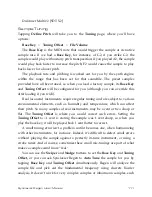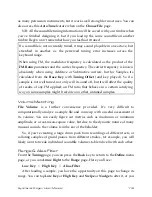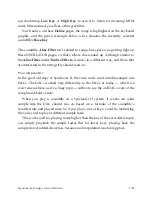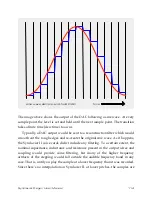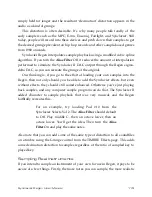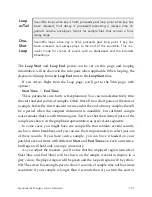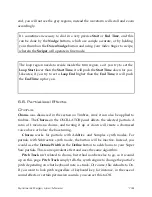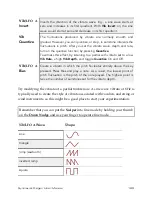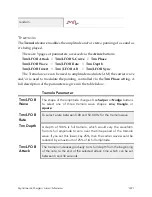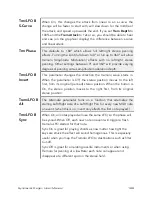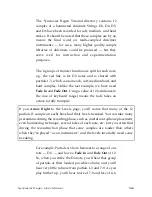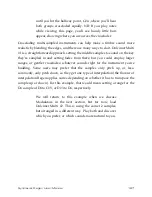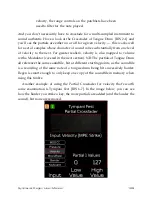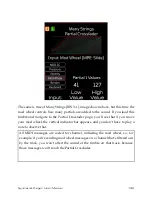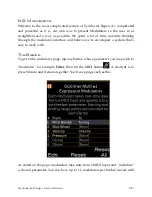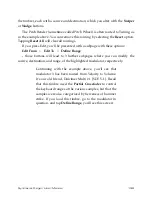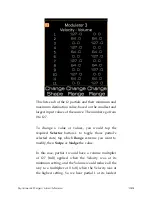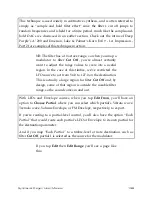
Synclavier Regen User Manual
123
Try playing with the tremolo settings now. Try changing
the phase setting so that you experience stereo panning,
as well as pure amplitude modulation.
6.7. Partial Crossfader
Now that you know how to create partials from scratch, it’s high time we talked
about the Partial Crossfader. Earlier, when discussing additive synthesis, we
briefly visited the
Levels
button on the ENVELOPE panel, which gave us access
to partial
Volume
and
Pan
, useful when blending several partials sounding at
the same time. But what it you don’t always want every partial to sound, or not
at the same volume? In that case, you’ll need to make use of the Partial
Crossfader.
Recall our discussion on the Track Crossfader in the SESSION chapter. The
Partial Crossfader is very similar, with some notable differences.
The Track Crossfader
filters
based on MIDI channel, and, optionally, keyboard
range, and can apply fade-in and fade-out based on the keyboard range (to
effectively crossfade). This is useful for playing Regen multi-timbrally, or for
layering several timbres together.
The Partial Crossfader, cannot
filter
based on MIDI-channel — that’s the job of
the tracks –– but
can
filter on keyboard range. This is useful for blending several
sounds (partials) together for a split (or multi-sampled) instrument. Additionally,
the input can be set to
filter
based on Pitch Bender, Mod Wheel, Keyboard,
Velocity or Pressure, or any MIDI CC (of the track MIDI channel). These
additional inputs make the Partial Crossfader the place to go for building
complex dynamic timbres that respond organically to MIDI input.
The best way to explore the Partial Crossfader is to see it in action, so we’ll
walkthrough some examples:
Call up Traditional [RW 4-4] and click Levels on the
ENVELOPE panel.
Arrow Left
to get to the Partial



